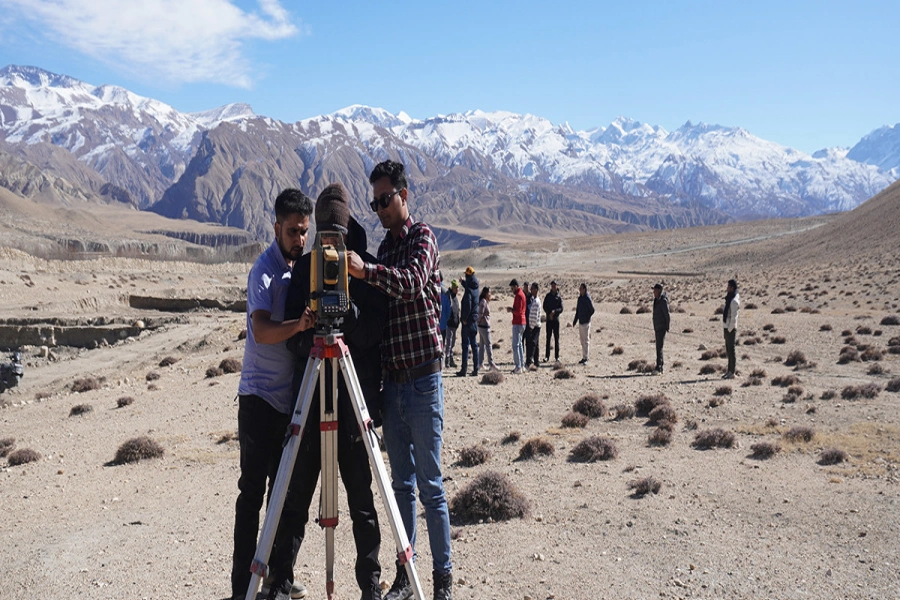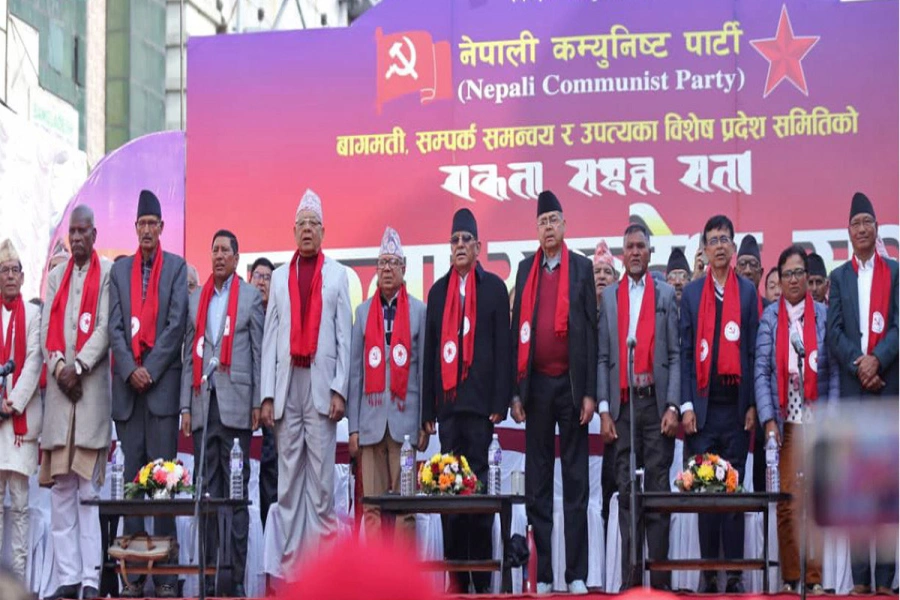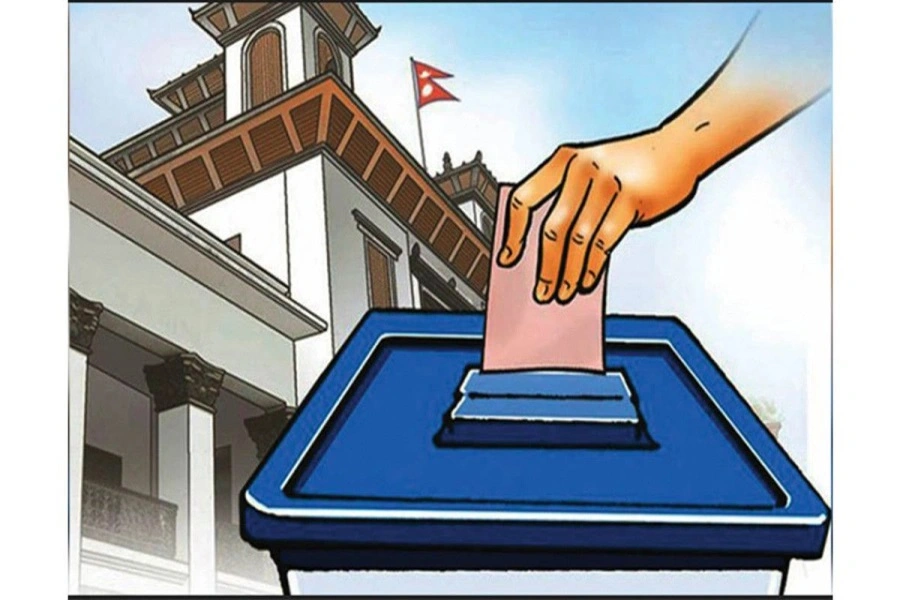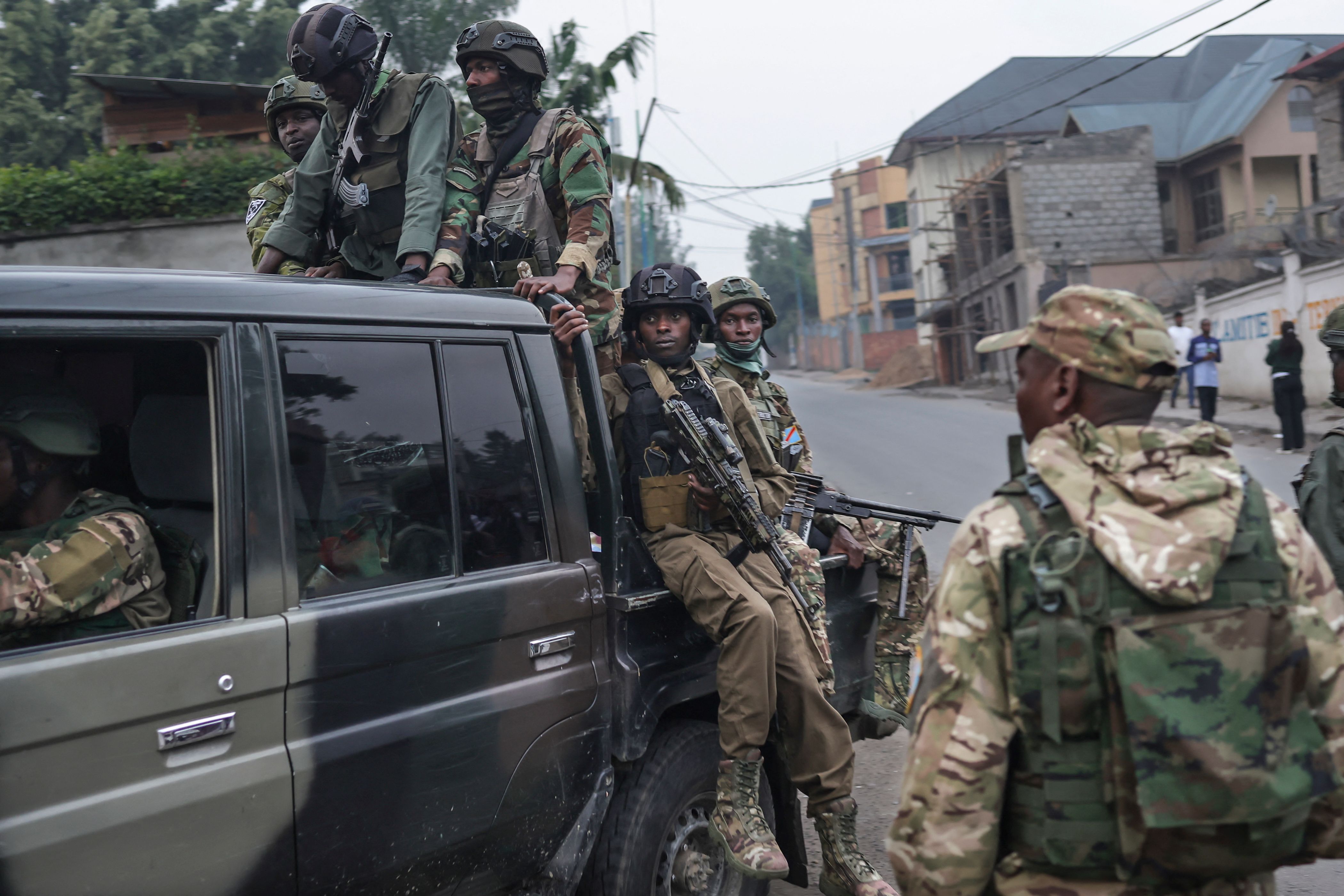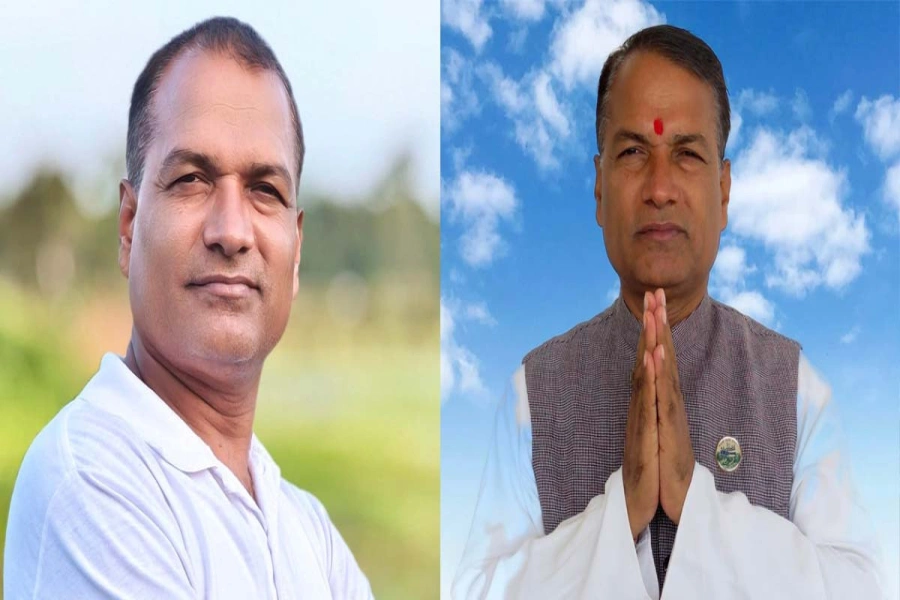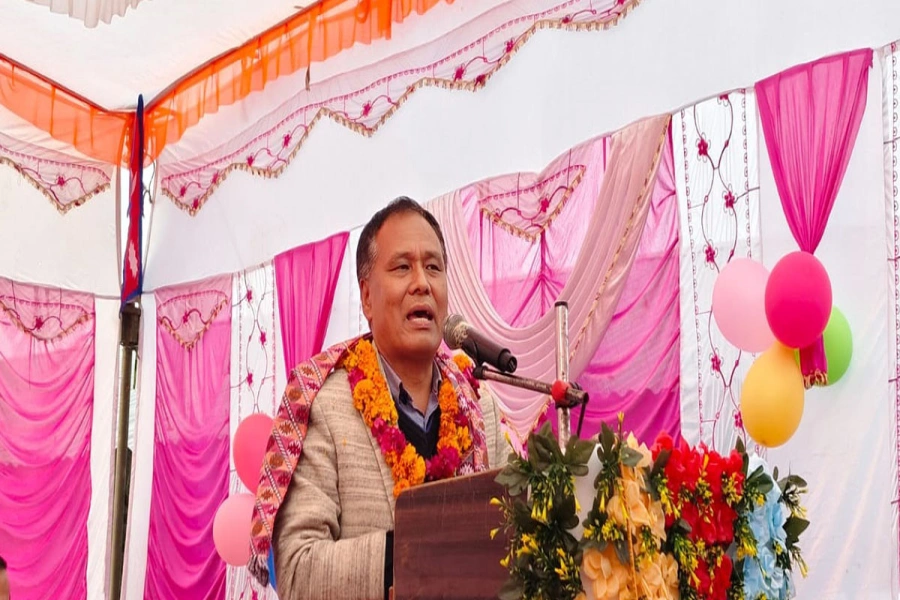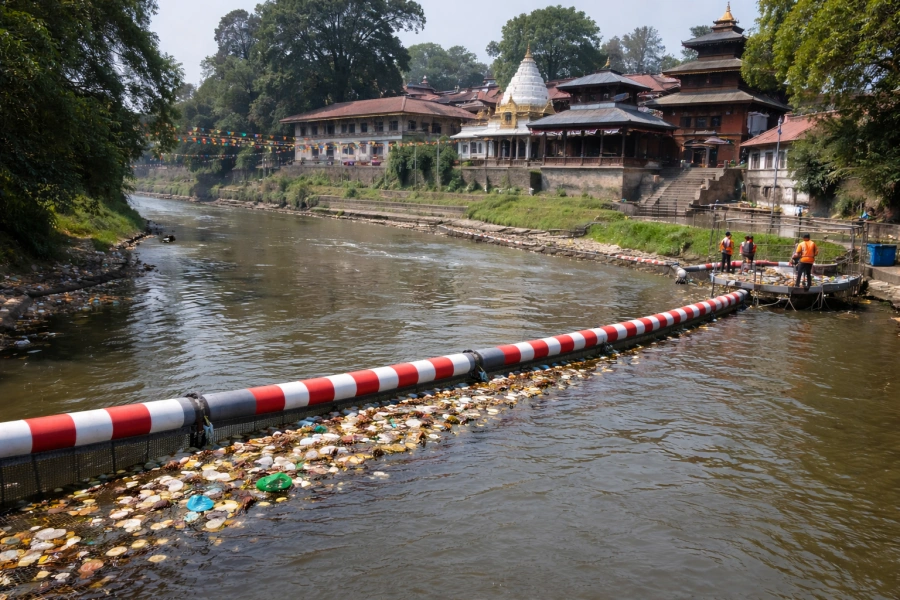BUSHEKELI, Rwanda, Dec 26: It was something, the silence. Nothing but the puff of her breath and the scuff of her slip-on shoes as Madeleine Mukantagara walked through the fields to her first patient of the day. Piercing cries once echoed down the hill to the road below. What she carried in her bag had calmed them.
For 15 years, her patient Vestine Uwizeyimana had been in unrelenting pain as disease wore away her spine. She could no longer walk and could barely turn over in bed. Her life narrowed to a small, dark room with a dirt-floor in rural Rwanda, prayer beads hanging on the wall by her side.
A year ago, relief came in the form of liquid morphine, locally produced as part of Rwanda’s groundbreaking effort to address one of the world’s great inequities: As thousands die from addiction in rich countries awash with prescription painkillers, millions of people writhe in agony in the poorest nations with no access to opioids at all.
Companies don’t make money selling cheap, generic morphine to the poor and dying, and most people in sub-Saharan Africa cannot afford the expensive formulations like oxycodone and fentanyl, prescribed so abundantly in richer nations that thousands became addicted to them.
Rwanda’s answer: plastic bottles of morphine, produced for pennies and delivered to homes across the country by community health workers like Mukantagara. It is proof, advocates say, that the opioid trade doesn’t have to be guided by how much money can be made.
“Without this medicine I think I would die,” said Uwizeyimana, 22.
When Mukantagara arrived, she smiled.
The small-scale production of liquid morphine that began in neighboring Uganda years ago is now being taken significantly further in Rwanda. It aims to be the first low- or middle-income country to make palliative care -- or the easing of pain from life-threatening illness -- available to all citizens, and for free.
As a palliative care worker, Mukantagara has long been a witness to death. She watched her sister die of cancer decades ago, in agony without relief.
The 56-year-old nurse settled on the edge of Uwizeyimana’s bed, and they began with prayer. Uwizeyimana was feeling better. “Now I think everything is possible,” she said. They held hands and prayed again, in whispers. Uwizeyimana closed her eyes.
As her visitors left Uwizeyimana blessed them, wishing for them what she might never have herself. May you get married, if you are not, she said. May you have children.
“It is hard to estimate how long someone will live,” Mukantagara said, walking away. Uwizeyimana is not the youngest among the 70 patients she sees. Many have cancer. Some have HIV. A few have both.
She attends patients’ funerals and thanks grieving families for their care. To relax, she sings in her church choir, and in her office by the hospital chapel she hums along with the hymns. A psychologist colleague offers her counseling.
The work is never easy, she said. But with morphine, at least, there is a chance for death with dignity.
Twenty-five years ago, the killing of some 800,000 ethnic Tutsis and moderate ethnic Hutus left this small country with an intimate knowledge of pain. Those who survived, struggled to recover from ghastly machete wounds and the cruelest of amputations.
With the health system shattered, there was little to ease the agony.
As Rwanda rebuilt itself, resilience was essential. Pain was to be endured, ideally without showing suffering; if you did, some said, you were not strong.
Speaker Ghimire appreciates Rwanda's efforts for economic devel...

But medical advances meant more people were living into old age and facing diseases such as cancer. Some thought their pain was punishment from God for past sins, recalled Dr. Christian Ntizimira, one of Rwanda’s most outspoken advocates for palliative care. At the same time, health workers treating Rwandans in the late stages of AIDS pleaded for a way to ease their pain.
Many doctors were ignorant of morphine or scared to use it. When Ntizimira was hesitant to prescribe it, early in his career, a mother fell to her knees in front of him and pleaded for mercy for her son. Ntizimira was ashamed.
“I went home and questioned myself: ‘Why study so many years if I can’t help someone in pain?’” he recalled. “I didn’t sleep that night.”
In much of the world, the use of opioids was exploding. Consumption has tripled since 1997, according to the International Narcotics Control Board. But the increase was in expensive formulations that are profitable for pharmaceutical companies, according to an AP analysis of INCB data. The use of morphine, the cheapest and most reliable painkiller, stagnated.
Administration of morphine for hospice patients is undisputed -- in 2016, when the U.S. Centers for Disease Control called on doctors to cut back on the flood of opioid prescriptions that fed the addiction crisis, it specifically exempted end-of-life patients.
But a dying person will only be a customer a few months and will not bolster the pharmaceutical industry’s profits, critics say. The problem in the United States took hold when companies began campaigning to prescribe opioids for patients suffering from chronic conditions like back pain and osteoarthritis -- prospective customers for decades, said Dr. Anna Lembke, a Stanford University professor who wrote a book about how well-meaning American doctors helped facilitate the crisis and has been a witness against pharmaceutical companies.
The campaign changed the culture of opioid prescribing for a generation of doctors: The prescription rate quadrupled between 1999 and 2010. The INCB reported that some 90 percent of opioids are now consumed by the richest nations, where just 17% of people live, primarily the U.S., Canada, Western Europe and Australia.
A major study by the Lancet Commission on Global Access to Palliative Care and Pain Relief recently described the inequality between rich and poor countries as a “broad and deep abyss.”
The study estimates it would cost only $145 million a year to provide enough morphine to ease end-of-life suffering around the globe, yet millions still suffer without pain medication in the poorest places.
“Pain is a torture,” said Diane Mukasahaha, Rwanda’s national coordinator of palliative care. She described patients without morphine who were near starvation because they couldn’t bear to eat. “People should have medication like an American person. We all are human beings. The body is the same.”
Stefano Berterame, chief of the narcotic control for the INCB secretariat, said the agency has implored pharmaceutical companies to help.
Commercially made morphine is on average nearly six times more expensive in many low- and middle- income counties than it is in wealthy ones, the INCB has reported, and the price varies wildly from place to place. Experts attribute it in part to small countries with low opioid consumption lacking the negotiating power to import drugs at bulk prices, particularly for controlled narcotics that require international authorizations that tack on cost. Studies have shown that in some countries, a 30-day supply of morphine costs the equivalent of 40 days of minimum wage work.
In 2013, Stephen Connor, executive director of the Worldwide Hospice Palliative Care Alliance, made a list of all the companies that make opioids and invited them to attend a conference. It was a chance, he said, to discuss how they could help address the crushing need for end-of-life pain treatment by producing morphine as a social good.
Of more than 100 companies invited, only five came -- and none of the American companies that mass-market opioids.
And so a growing number of African countries -- Rwanda, Kenya, Malawi -- began to make and distribute morphine on their own, usually in a nonprofit and government collaboration. They looked to Uganda, where the nonprofit Hospice Africa Uganda was making liquid morphine from powder in a process so basic the solution was mixed for nearly two decades at a kitchen sink.
The Ugandan operation, though much praised, remains limited in reach. Its existence outside the government health system is precarious, relying so much on donor support that it nearly shut down this year, founder Dr. Anne Merriman said.
By putting morphine production and distribution under strict government control and covering the costs for patients, Rwanda has quietly become the new model for Africa. The liquid is produced from imported powder three times a week, about 200 bottles at a time, in a single room where a handful of workers in protective scrubs are checked before leaving to prevent the drug being smuggled out, said Richard Niwenshuti Gatera, a pharmacist and director of the production facility.
Before Rwanda’s morphine production began in 2014, Gatera watched his aunt make a 12-hour journey by bus to Uganda to obtain the drug. If none was available, she would return home, wait a while and set out again. Last year she died, peacefully, while taking the Rwanda-made drug, he said.
Like all opioids, liquid morphine can be abused, and can be addictive. But the government has direct control over the supply to prevent what happened in the United States, where drug distributors shipped millions of pills to pharmacies in tiny towns, quantities far outside justifiable medical need, said Meg O’Brien, whose Treat the Pain organization helps poor nations produce morphine. The drug is reserved for the sickest people. Only the supplier of morphine powder supplier makes money, so there is no mass marketing effort to expand sales.
The bottles of liquid morphine are distributed to hospitals and pharmacies, where they are kept under lock and key until community workers like Mukantagara retrieve them. Then they are carried to the homes of the suffering even in some of Rwanda’s most rural areas, along footpaths between rolling bean fields and banana plants.
Mukantagara arrived at the bedside of 89-year-old Athanasie Nyirangirababyeyi. She lives on a mattress in her son’s home, sleeping under a poster of Jesus and the words of Psalm 23 — “The Lord is my shepherd; I shall not want” — though she never learned to read. She has been sick for five years and has taken liquid morphine for three.
“With pain relief I can eat. I can go outside,” Nyirangirababyeyi said. “I can greet my neighbors. I can walk slowly, slowly and go to church.”
But fear and confusion surrounding opioids persists.
Opioids are among the most addictive drugs on the planet, and many doctors and bureaucrats in the developing world have long hesitated to import or prescribe them. Cost, onerous regulations and cultural aversion have made it harder for patients in the poorest countries to find relief.
Dr. Zipporah Ali, executive director of the Kenya Hospices and Palliative Care Association, said she and colleagues toured the country and were shocked to find expired opioids sitting on shelves in health facilities while patients screamed in pain. After watching her brother die of leukemia without painkillers, she now works with Kenya’s government to get locally made liquid morphine into hospitals.
Even in Rwanda, doctors at first were hesitant to prescribe morphine for Ange Mucyo Izere, a 6-year-old girl who is undergoing chemotherapy for bone cancer.
“She was not able to sleep, talk, pray,” said her mother, Joselyne Mukanyabyenda.
The girl began sipping doses of the liquid morphine in October and has been transformed. She took a visitor’s smartphone and began snapping photos, then struck poses for a camera.
“I miss school. I miss my friends,” she said. If the chemotherapy helps, she is expected to return to class.
There have been no reports of abuse from nurses across the country, said Mukasahaha, the nation’s palliative care director.
The health workers who prescribe morphine, including nurses and midwives, are taught to differentiate between chronic life-limiting diseases, which can be treated with morphine, and chronic pain, which cannot, at least without risk.
It is a key distinction. Critics say for-profit drug makers have blurred that line, seizing on the good intentions of hospice advocacy to market opioids to patients with common chronic conditions. It is hard for people to tell now when opioids are appropriate and when the risks outweigh the benefits, said Lukas Radbruch, a German doctor and professor of palliative medicine.
“What makes me mad is the confusion this causes,” he said. “If you would have asked me two years ago, I would say we’re steadily improving. But now I’m really afraid that the crisis in the U.S. is triggering a backlash which leads to rapid deterioration of the global situation.”
Earlier this year, the World Health Organization rescinded guidelines that sought to expand opioid access after U.S. lawmakers alleged they were corrupted by Purdue Pharma, the maker of OxyContin.
The congressional investigation found that organizations and people with financial ties to the company had a role in crafting the 2011 document, which stated addiction occurs in less than 1% of patients -- a common marketing claim of the pharmaceutical industry that has been repeatedly debunked. The National Institute on Drug Abuse estimates that up to 29% of patients prescribed opioids for chronic pain misuse them and up to 12% develop addiction.
Rep. Katherine Clark, D-Massachusetts, who authored the report, said she understands the need to address the global scourge of untreated pain. But she said the international health community cannot turn the reins over to the for-profit pharmaceutical industry that is already widely blamed for causing one epidemic.
Purdue wrote in a statement that the report is “riddled with inaccuracies,” and the company denies influencing the documents. The statement maintained that the marketing of OxyContin was in line with the U.S. Food and Drug Administration’s approved labeling and that Purdue always complied with the agency’s orders to update labels or enhance warnings “to maximize patient safety.” Decisions about when to prescribe opioids, the company said, should be up to doctors and their patients.
Dr. Gilles Forte, coordinator of the WHO’s essential medicines department, said the agency is putting together a panel to write new guidelines that will include a more detailed accounting of the latest scientific evidence about the risks of opioids and the cause and consequences of the American epidemic. He said they took the congresswoman’s allegations seriously but found no evidence the guidelines were tainted by pharmaceutical interests.
In the meantime, poor nations don’t know what to do, said Liliana De Lima, executive director of the International Association for Hospice and Palliative Care. The whole world now seems concerned about people suffering and dying from opioid addiction, she said, but not about people suffering and dying in agony without opioids.
“I asked myself, when do patients lose dignity? she said. “It’s not just about how long you live. It’s about how well you live until you die.”
Most countries in the developing world continue to look to for-profit companies for pain relief. It is an inherently broken model, De Lima said, because companies are only interested in selling drugs they can profit from, so the neediest people in agony will never get what they need.
Rwanda offers an alternative, and hope.
The drive to provide homemade morphine is spreading across Africa, though slowly: Twenty-two of the continent’s 54 countries now have affordable liquid morphine, according to Hospice Africa Uganda. Use is still badly limited by poor logistics and lack of funding.
Rwanda aimed to reach everyone who needs palliative care by 2020. But as the new year approaches, not everyone receives home visits by community health workers, Mukasahaha said. The training of those workers, thousands in all, goes on.
At a rural home near Lake Kivu, Mukantagara carried a bottle to 52-year-old Faina Nyirabaguiza, who has cancer. Each of her movements signaled pain. She walked slowly. She settled on a wooden bench and folded over herself, rubbing her wrist with her thumb.
Mukantagara increased her morphine dosage on the spot. She poured the green liquid into the bottle cap. Nyirabaguiza drank three, one after another.
“Maybe it will help me,” she said, her eyes fixed on a spot in the distance. “My wish is to die. Really, I’m suffering.”
Nyirabaguiza closed her eyes and prayed. Mukantagara’s hand was on her back, soothing.
On the nurse’s ride back to the hospital, her vehicle passed a pickup truck with a coffin in the back. Women ran alongside it, down the winding road, and sang.




